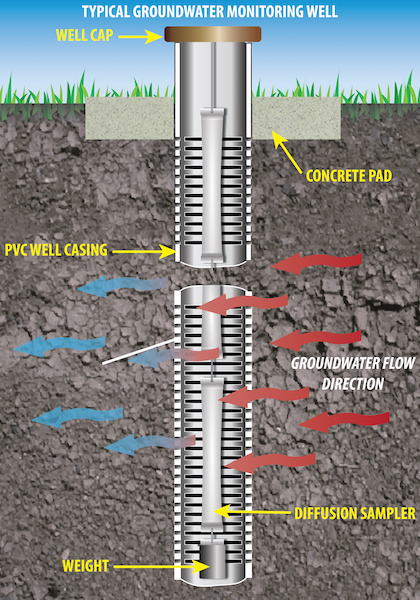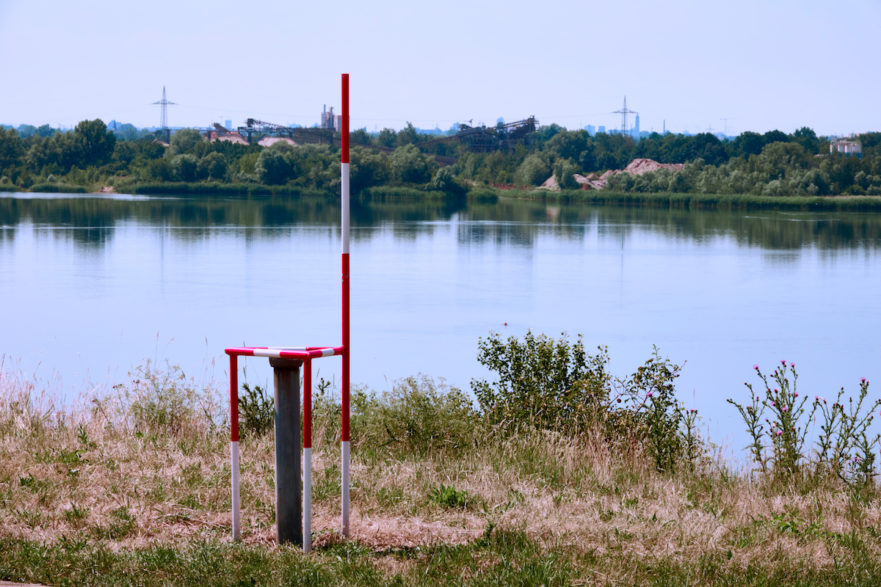Monitoring wells play an important role in tracking underground water movements, water availability, and contamination levels in Texas. But what are monitoring wells exactly?
What Are Monitoring Wells?
Monitoring wells are wells that are used to measure the quality, quantity, level, etc. of underground water. They might consist of existing wells fitted with special instruments, or they could be purposely excavated for use in collecting data.
What Is a Monitoring Well Used For in Texas?
The purpose of monitoring wells is to collect data on groundwater. They essentially provide a small window into the water table, and make it possible to take measurements on underground water levels, water pressure, general movements, and so forth.
How a Monitoring Well Works

A monitoring well allows groundwater into the well through a variety of methods, depending on the type. Some—called piezometers—allow water up through the base, making it possible to measure underground water pressure. Water-table wells, on the other hand, allow water to seep in through all sides, which helps with measuring the water table level.
Monitoring wells make use of special instrumentation that measures water pressure, water level, etc. That data can then be used for a variety of purposes.
What Is Groundwater Data Used For?
Samples of groundwater may be collected to analyze ecosystems or to test for contaminants (important in areas where contamination is likely to occur). The data collected from a well may also help inform decisions about legislation, water use, etc.Data on underground water movements is especially important in Texas since just over 60% of all water used comes from groundwater.
Installing Monitoring Wells in Texas
Monitoring wells must be installed using precise methods. The following general steps are typically followed.
Assess the Area
First, it’s important to know exactly what you’re dealing with when choosing the type of monitoring wells to install and where they should be located. Soil types, the presence of utilities, and even above-ground construction can all influence where you need to place individual wells.
Ground penetrating radar (GPR) plays a vital role in analyzing a location for monitoring wells. GPR makes is possible to locate underground utility lines (water, gas, etc.) and assess below-ground formations without disturbing the soil, which is important when taking precise data for use in scientific studies.
Determine the Type and Number of Wells Needed
The data collected through GPR and other methods can inform the types of wells to be installed, how many of them are needed, and how they should be placed. This is important since the wrong spread of wells could end up collecting inconclusive data.
Additionally, depth matters. For instance, if you’re measuring ground water quality in an aquifer with multiple layers of varying purity, you might need to use a variety of wells with different layers sealed off.
Bore the Hole
Once the type, number, depth, and placement of wells is established, it’ll be time to bore out the holes. Shallow wells might be done by hand tools, while other methods might be more appropriate for digging deeper holes or taking soil samples.
Install Materials and Instruments
Additional materials, such as concrete, PVC piping, and so forth, may need to be installed in the hole. For instance, you’ll need permeable walls in monitoring wells intended to measure water depth, while waterproofed walls would likely be more appropriate for water pressure measurements.
Instrumentation will also be installed before the well is capped and sealed off.
Monitoring Well FAQs
Common questions that arise about monitoring wells and their use include the following.
How long does it take to install a monitoring well?
It depends on the materials being used. For instance, concrete needs time to cure, so the process could take days. Even after installation, it may take a full day to allow groundwater to seep back in.
What is the difference between a piezometer and a groundwater monitoring well?
Piezometers have solid pipe walls and are used to read groundwater pressure levels. A groundwater monitoring well is used to collect water samples to be tested for contamination.
How deep are groundwater monitoring wells?
It depends on the composition of the ground, where water flows, etc. They need to be deep enough to allow groundwater to flow in, which could be several yards or more.
How GPR Helps with Monitoring Well Installation
GPR can play a vital role in planning monitoring well installation. To learn more about how ground penetrating radar can help you, contact Wood Inspection Services, Inc.

